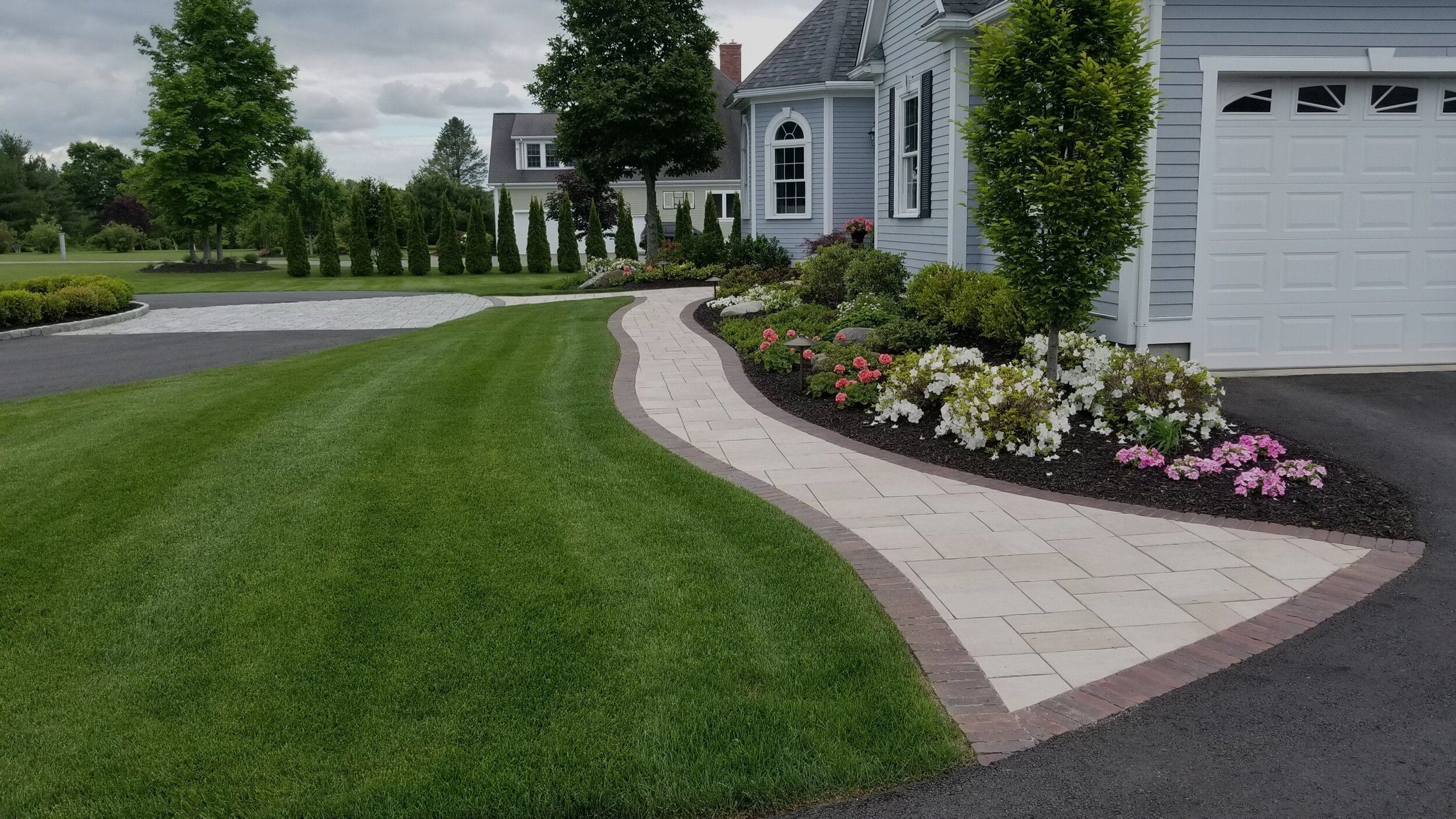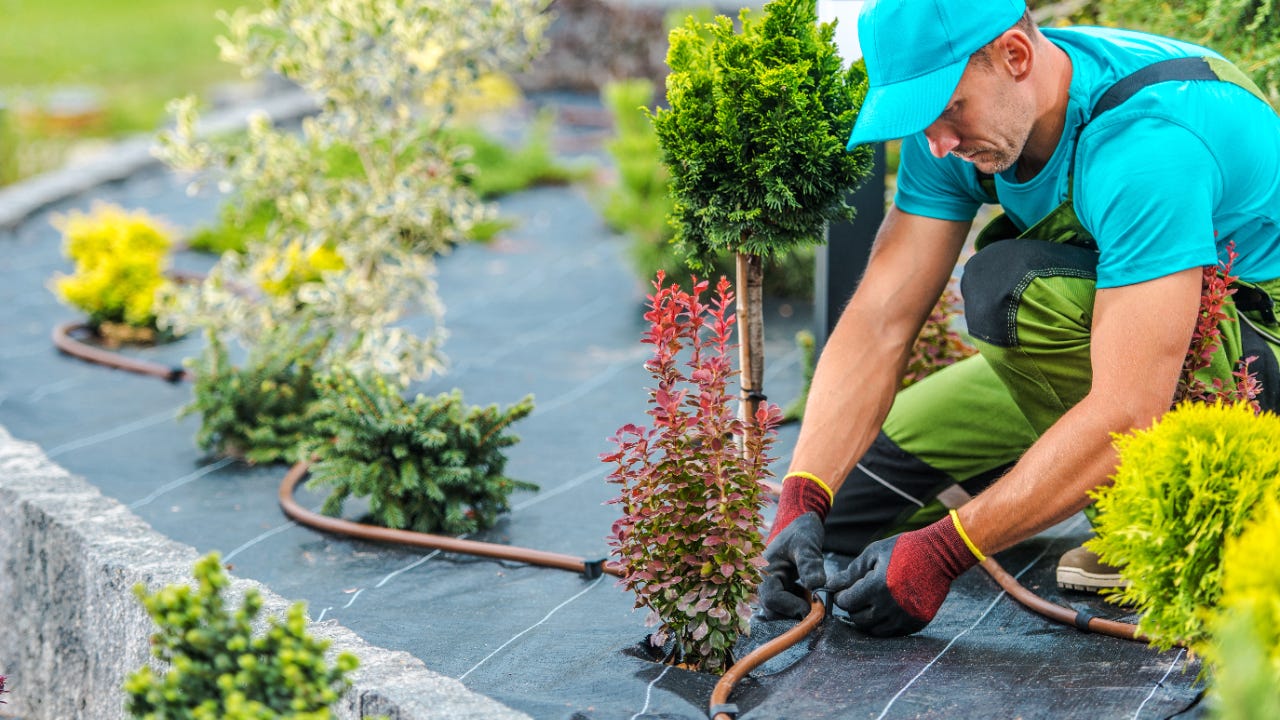Accomplish Spectacular Outcomes with Innovative Palm Desert Landscaping Styles
Accomplish Spectacular Outcomes with Innovative Palm Desert Landscaping Styles
Blog Article
A Comprehensive Overview to Creating and Implementing Effective Landscape Design Solutions
The art and scientific research of landscape design prolong beyond simple aesthetic appeals; they include a thoughtful combination of design principles, ecological stewardship, and practical execution. What approaches can one use to guarantee these landscapes not just grow however additionally thrive in consistency with their surroundings?

Understanding Landscape Layout Concepts
One could question what fundamental aspects contribute to reliable landscape layout. At its core, effective landscape style depends upon a number of essential principles that lead the setup and option of components within an area. These concepts include unity, percentage, rhythm, and equilibrium, each offering to develop an unified outdoor atmosphere.
Unity describes the cohesive relationship among various components, ensuring that they work with each other aesthetically and functionally. Equilibrium can be accomplished via asymmetrical or balanced plans, allowing the landscape to feel secure and welcoming. Proportion includes comprehending the scale of components in relation to each various other and the surrounding setting, promoting visual harmony and comfort.

Assessing Your Outdoor Room
Prior to executing the principles of landscape design, an extensive assessment of your outdoor space is essential. This initial analysis aids define the scope of your landscaping project and ensures that your layout lines up with the distinct features of your property. Begin by evaluating the measurements of your room, taking exact measurements to understand the offered location for different components such as patio areas, pathways, and yards.
Next, observe the existing features of your landscape, consisting of topography, dirt quality, and drain patterns. These factors considerably influence plant option and placement. Furthermore, examine the sunlight exposure across various locations throughout the day, as this will influence the types of plants that thrive in your yard.
Take into consideration the microclimates created by structures, trees, and various other barriers, as they can impact temperature and dampness degrees. Finally, remember of any type of existing plants or hardscape elements that you wish to keep or eliminate. This extensive analysis prepares for a effective and well-informed landscape design remedy, ensuring that your style is not only cosmetically pleasing but also functional and sustainable for several years ahead.
Lasting Landscape Design Techniques
These methods not just advertise eco-friendly equilibrium yet additionally enhance the visual and practical worth of a landscape. Executing efficient irrigation systems, such as drip irrigation, reduces water waste and makes certain that plants receive sufficient dampness (Palm Desert Landscaping).

An additional reliable method is the strategic positioning of trees and hedges to offer all-natural windbreaks and shade, thus reducing power expenses (Palm Desert Landscaping). Rain yards can be incorporated into the landscape design to manage stormwater runoff effectively, filtering system toxins before they get in rivers
Choosing the Right Plants
Choosing the right plants for your landscape is critical to accomplishing both visual appeal and environmental harmony. The process starts with an understanding of your regional climate, dirt problems, and the specific microenvironments within your landscape. Analyzing elements such as sunshine direct exposure, wetness degrees, and existing plants will aid you select plants that prosper in your one-of-a-kind setup.
Take into consideration integrating indigenous plants, as they are well-adapted to neighborhood conditions, call for less upkeep, and support local wildlife. Furthermore, selecting a varied selection of types can boost biodiversity while lowering the danger of condition and pest episodes. It is necessary to assess the development routines, growing durations, and seasonal colors of possible plants to produce a dynamic and natural landscape.
In addition, think regarding the meant usage of the room; for instance, if the location will certainly experience high foot website traffic, decide for resistant ground covers. By thoughtfully picking plants that align with both your visit our website visual objectives and environmental demands, you can produce a lasting landscape that not just enhances your building but likewise contributes positively to the surrounding environment.

Execution and Maintenance Methods
When the best plants have actually been picked for your landscape, the emphasis moves to effective execution and recurring upkeep strategies. Successful installation starts with proper site preparation, that includes dirt screening to identify nutrient levels and pH, followed by amending the soil as required. Meticulously arrange plants according to useful source their development habits and light requirements, making certain appropriate spacing to advertise healthy and balanced growth.
Irrigation is an essential component of application. Develop a watering routine that thinks about the specific demands of each plant varieties, adjusting for seasonal adjustments. Utilizing drip irrigation systems can improve water effectiveness and decrease runoff.
Upkeep approaches have to be applied to guarantee the durability and vitality of your landscape. Routine tasks consist of weeding, mulching, and trimming to control growth and protect against illness. Fertilizing ought to be carried out based upon dirt examinations, giving the essential nutrients without over-fertilizing.
Keeping track of for conditions and bugs is necessary; early detection can avoid significant damages. Finally, seasonal modifications to maintenance regimens, such as preparing and winterizing perennials for spring development, will ensure that your landscape continues to be visually appealing and healthy and balanced year-round.
Verdict
In final thought, efficient landscape design options call for a thorough understanding of style principles, careful evaluation of outside rooms, and the application of lasting strategies. The option of ideal plant types plays an essential role in boosting aesthetic charm and eco-friendly resilience - Palm Desert Landscaping. Effective execution and ongoing maintenance better ensure the durability and vitality of landscapes. By integrating these components, landscapes can be transformed into attractive, practical environments that advertise biodiversity and contribute favorably to community wellness.
One might question what fundamental elements contribute to effective landscape design. At its core, successful landscape design pivots on try this site numerous key principles that direct the plan and option of aspects within a space.Picking the right plants for your landscape is crucial to accomplishing both aesthetic allure and eco-friendly consistency. It is necessary to evaluate the growth behaviors, blooming periods, and seasonal colors of prospective plants to produce a cohesive and dynamic landscape.
Once the ideal plants have actually been chosen for your landscape, the focus moves to reliable execution and recurring upkeep methods.
Report this page